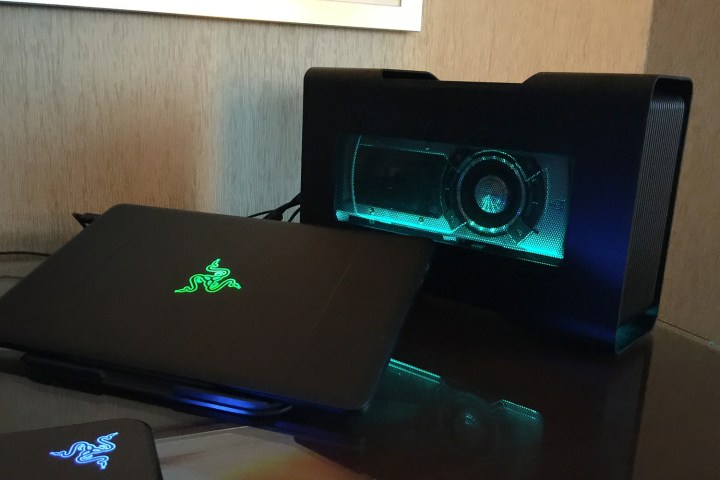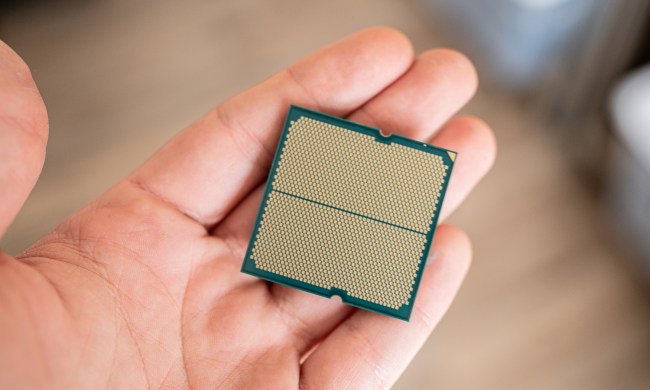
Although it isn’t the first device to attempt such a feat, the Core is certainly the most seamless yet. That’s largely thanks to the Thunderbolt 3 connection, which carries not just a PCIe signal to the GPU, but also four USB 3.0 port and Ethernet, while still powering and even charging the battery in the connected system, which Razer hopes will be the already compatible Blade Stealth, or the brand new Razer Blade. It isn’t an exclusive device though, and any manufacturer can build support into systems with a Thunderbolt 3 port and Windows 10.
We spent some time reviewing the Blade Stealth not long ago, and appreciate its beautiful display, speedy performance, and solid, attractive design. The battery life was a little lacking, but the system is the perfect candidate for this kind of upgrade. Its i7 processor, when paired with a nice GPU, could be the perfect candidate for truly powerful gaming in a desktop-like setting.
AMD Compatibility
- R9 Fury
- R9 Nano
- R9 300 Series
- R9 290X
- R9 290
- R9 280
The Core supports PCIe x16 cards from both Nvidia and AMD cards, including the two-lane, full-length Titan X and Fury series offerings (we’ve included a full list to the left and below). Whether you’re on the red or the green team, card installation is simple and tool-free. The back of the aluminum chassis slides out, and the card is held in by a single thumb-screw.
Nvidia Compatibility
- GTX Titan X
- GTX 980 Ti
- GTX 980
- GTX 970
- GTX 960
- GTX 950
- GTX 750 Ti
- GTX 750
When using an AMD card, the system is also able to take advantage of the brand new XConnect technology. This feature allows R9 300 and Fury series owners to quickly attach or detach the cards from their system with the same ease as unplugging a USB thumb drive.
Pre-orders for the Core are already available, with an expected ship date some time in April. The external unit will cost gamers $500 on its own, but bundling it with the purchase of a Blade Stealth brings that price down to $400. Current owners of the Blade Stealth will also be offered that price if they want to add a Core to their existing setup.





